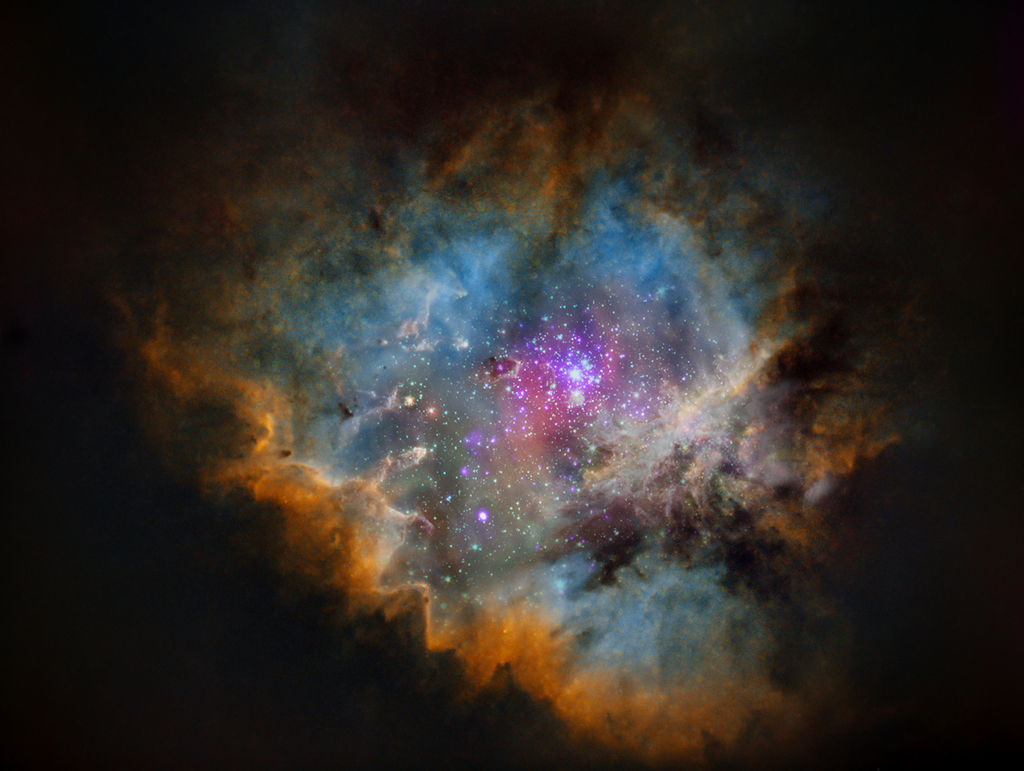2021年11月19日
NGC 281: Starless with Stars
Image Credit & Copyright: Wido Oerlemans – X-ray: Chandra, Infrared: Spitzer
Explanation: In visible light the stars have been removed from this narrow-band image of NGC 281, a star forming region some 10,000 light-years away toward the constellation Cassiopeia. Stars were digitally added back to the resulting starless image though. But instead of using visible light image data, the stars were added with X-ray data (in purple) from the Chandra X-ray Observatory and infrared data (in red) from the Spitzer Space Telescope. The merged multiwavelength view reveals a multitude of stars in the region’s embedded star cluster IC 1590. The young stars are normally hidden in visible light images by the natal cloud’s gas and obscuring dust. Also known to backyard astro-imagers as the Pacman Nebula for its overall appearance in visible light, NGC 281 is about 80 light-years across.
Tomorrow’s picture: light-weekend
NGC 281:移除恒星后再叠合恒星
影像提供与版权: Wido Oerlemans – X射线: Chandra, 红外线: Spitzer
说明: NGC 281是仙后座方向,约10,000光年远处的恒星形成区。在这幅呈现NGC 281的窄波段影像里,可见光波段可见的恒星已被移除。而影像中所见的恒星,则是后来再数位叠加上去的。不过,所用的恒星数据并非来自可见光波段,而是X射线波段钱德拉卫星(紫)和红外波段史匹哲太空望远镜(红)的数据。这幅多波段组合景观,展现此区域内嵌星团IC 1590的恒星之多样性。在可见光波段的影像里,这些年轻恒星受到胎衣云气和不透光尘埃的遮掩通常隐不可见。跨幅约80光年的NGC 281,在后院天文摄影者的圈子里,因它在可见光波段的外观,而有小精灵星云的昵称。
明日的图片: light-weekend



